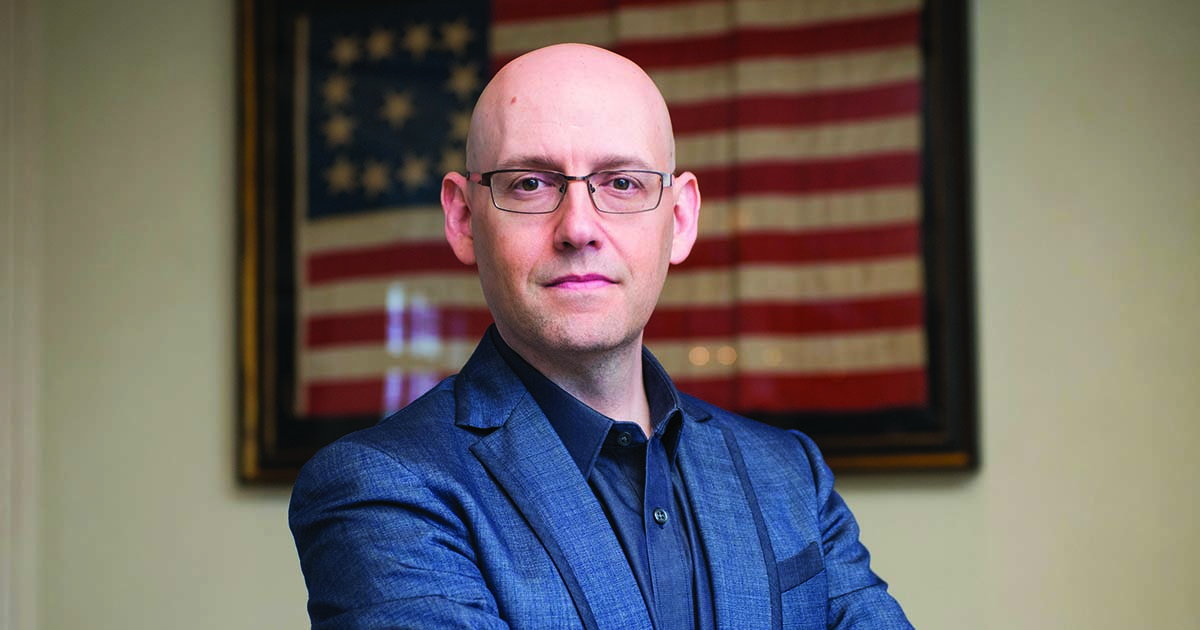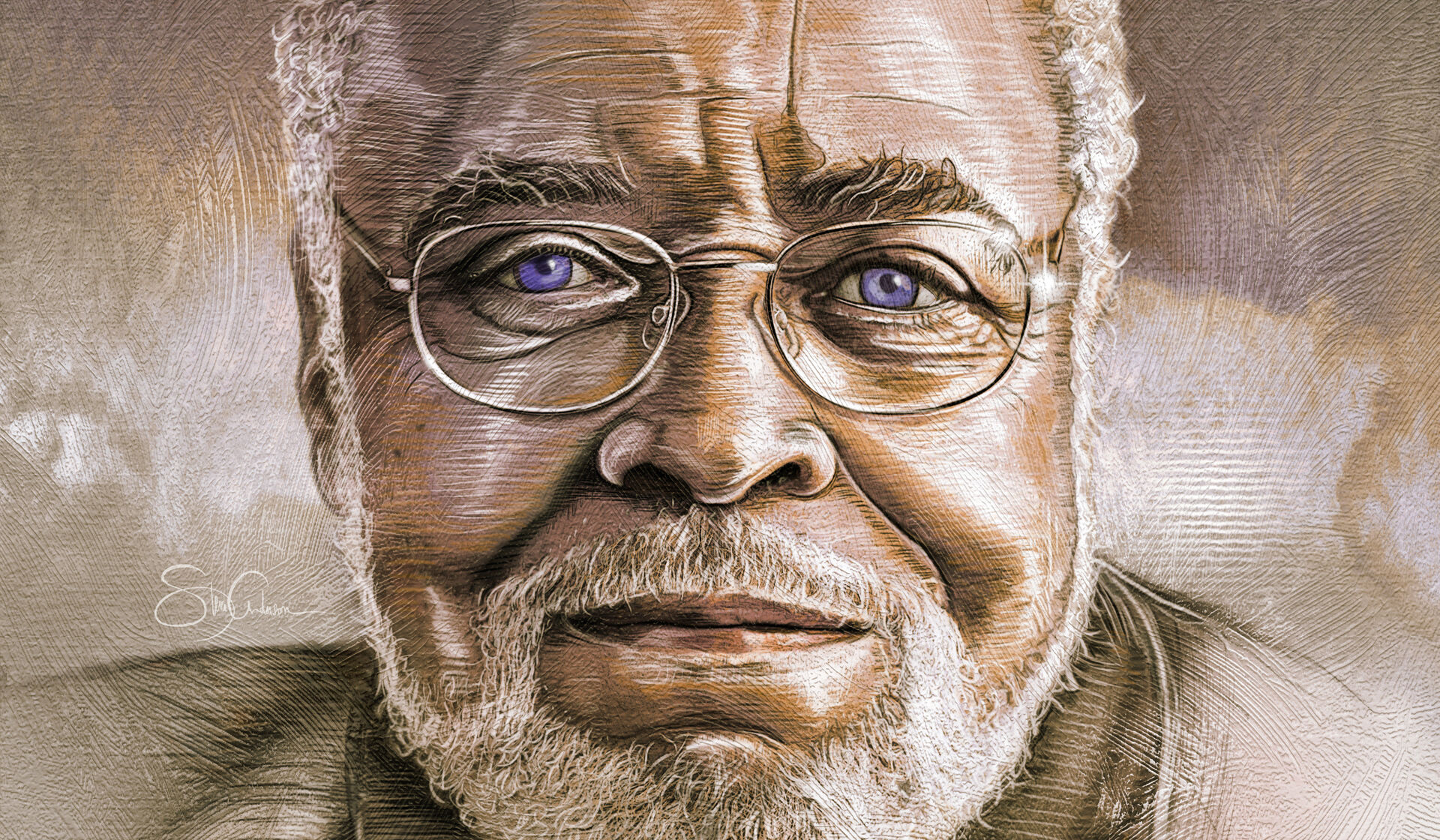Like all his novels, the latest thriller from best-selling author Brad Meltzer, ’92, relies on copious amounts of historical research. Yet the real-life setting and people that inspired “The Escape Artist” (Grand Central Publishing, 2018) have touched him like no other book.
“I never thought the government would even let me in,” Meltzer said, referring to Dover Air Force Base in Delaware, which has a U.S. government mortuary where the victims of the most high-profile tragedies and top-secret missions are taken before being laid to rest. “It is America’s most important funeral home,” said Meltzer, adding that everyone from the 9/11 victims and space shuttle Columbia astronauts to CIA operatives and fallen soldiers have been delivered there.
At Dover, Meltzer witnessed morticians rebuilding hands so a mother could hold them one last time and reconstructing faces so a family member’s final glimpse of a loved one is familiar. “I saw one mortician work 14 straight hours on a soldier to fix his shattered jaw. And he did not put in any overtime for all that work. They have such heart.”
“The Escape Artist” marks Meltzer’s 20th anniversary as an author. At last count, he has written 30 books and sold 12 million copies in the U.S. alone, and that was before his newest book debuted on the New York Times best-seller list.
“For someone who writes thrillers, Dover was the perfect setting,” Meltzer said of his new book. “It is a place full of secrets and surprises. Those who work there know the details of hidden missions. No plot is better than a good character.”
The main characters in “The Escape Artist” are Zig, an amalgam of the morticians Meltzer interviewed at Dover, and Nola, a character based on a discovery he made at Fort Belvoir in Virginia. “I passed a room with the sign ‘Artist in Residence,’” he recalled, and soon after learned that the U.S. Army has sent artists (including women) into war zones since World War I.
“A painting does not just document an event, it tells a story,” he said. “Imagine this person running into a dangerous place carrying paper, paint brushes, and colored pencils. I had to write about that person.”
Beyond writing thrillers, Meltzer pens nonfiction, comics, and children’s books. He also has hosted two TV shows, given TED Talks, recorded podcasts, and participated in USO tours. Not unlike the multifaceted film character Forrest Gump, Meltzer also has a strange proclivity for witnessing and contributing to defining moments in history.
Take, for example, the National September 11 Memorial & Museum in New York City. On the 15th anniversary of the terrorist attack, Meltzer helped unveil the famous flag the firefighters raised that day at Ground Zero. Nearly two years earlier—via his television show “Brad Meltzer’s Lost History” (currently on hiatus)—he and his production team not only found the flag that had been missing for more than a decade, they painstakingly authenticated it down to the dust residue.
“When it came to finding the flag, Brad was dogged,” said Mike Mezaros, co-executive producer of the “Lost History” show, which he describes as “a perfect combination of ‘Antiques Roadshow’ and ‘America’s Most Wanted.’ It made people want to hunt for lost things in their attic.” (Four days after the 9/11 episode aired, a flag collector handed it over at a fire station in Everett, Washington. He had not realized it was the 9/11 flag until seeing the show.)
Meltzer has also been the recipient of newsworthy presidential scoops. In 2011, while researching his book “The Inner Circle,” George H. W. Bush shared with Meltzer a copy of the 1993 note he left behind for Bill Clinton in the Oval Office. It affirmed a belief that ever since Ronald Reagan, presidents leave behind a personal letter to the incoming commander in chief. In 2015, Meltzer learned from two secret service agents that Reagan always carried a gun following the 1981 attempt on his life.
“No one gets crazier emails than me,” said Meltzer, who led another investigative team on “Brad Meltzer’s Decoded,” a TV show that attempted to crack unsolved crimes and codes. “People bring me stories,” he said, recounting a phone call from a family member of John Wilkes Booth, claiming the man who assassinated Abraham Lincoln actually escaped and lived to an elderly age.
While Meltzer enjoys telling others’ stories, he also delivered a TED-Ed Talk advising students to write their own stories. “I believe ordinary people can change the world, and I have believed that ever since I walked into Angell Hall as a history major,” he said, emphasizing the need to dream big and work hard. “The most authentic story you will ever tell is your own story. And for 20 years now, that is what I have been doing. Telling my own story.”
Judd Winick, ’92, remembers watching his college housemate write his first novel in their post-college digs in Boston. (At 800 pages, the book involved two U-M friends and received 25 rejection letters, according to Meltzer). “He taught himself to write,” said Winick of his first-generation college friend. To this day, Winick is the final proofreader for all of Meltzer’s manuscripts. (Not coincidentally, each of his 12 novels has at least one reference to U-M.)
“I owe U-M my career,” said Meltzer, citing Michigan professors, friends, and alumni who supported him along the way (including the publisher who bought his first book, Larry Kirshbaum, ’66). U-M Regent Mark Bernstein, ’93, JD’96, MBA’96, remembers the ingenious way he helped promote his fraternity brother’s third book, “The First Counsel.” While working as a junior aid to the Clinton administration, he smuggled a bunch of copies onto Air Force One just before a press trip. “I scattered them throughout the entire plane,” he recalled, laughing.
Tired of reality TV show stars and celebrities gaining the attention of his three children (ages 16, 12, and 10), Meltzer started a children’s book series in 2014, published by Penguin Books. The books tell the story of real-life heroes by positioning them as kids. “I want to teach children what leadership and decency and community look like and what being a good person means,” Meltzer said, describing the mission behind the series.
The collection of nearly 20 books that began with “I Am Amelia Earhart” now includes everyone from Gandhi to Jane Goodall. Up next is “I Am Neil Armstrong.” However, Jed Bennett, ’96—the director of marketing for children’s books at Penguin—says the book he would really like to publish next is “‘I Am Brad Meltzer.’ Because he deserves it.”
Jennifer Conlin, ’83, is deputy editor of Michigan Alumnus.





